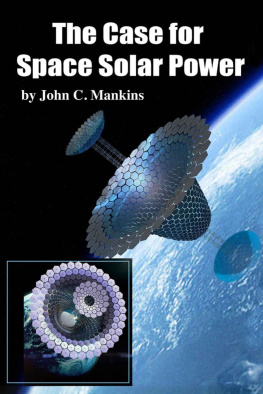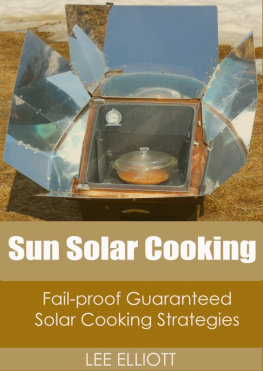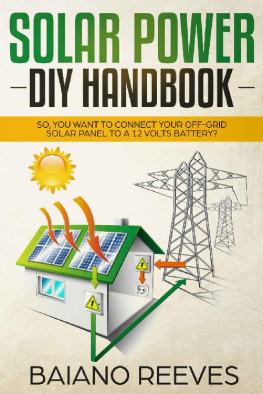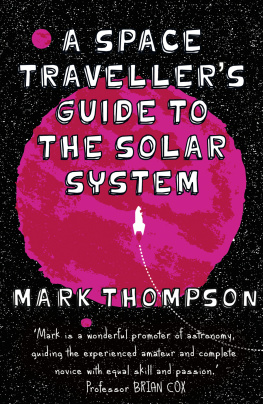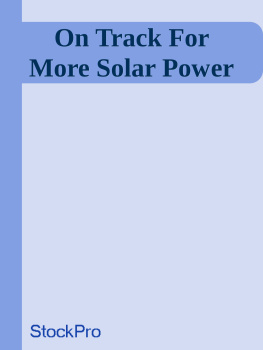John Mankins - The Case for Space Solar Power
Here you can read online John Mankins - The Case for Space Solar Power full text of the book (entire story) in english for free. Download pdf and epub, get meaning, cover and reviews about this ebook. year: 2014, publisher: Virginia Edition Publishing, genre: Children. Description of the work, (preface) as well as reviews are available. Best literature library LitArk.com created for fans of good reading and offers a wide selection of genres:
Romance novel
Science fiction
Adventure
Detective
Science
History
Home and family
Prose
Art
Politics
Computer
Non-fiction
Religion
Business
Children
Humor
Choose a favorite category and find really read worthwhile books. Enjoy immersion in the world of imagination, feel the emotions of the characters or learn something new for yourself, make an fascinating discovery.
- Book:The Case for Space Solar Power
- Author:
- Publisher:Virginia Edition Publishing
- Genre:
- Year:2014
- Rating:3 / 5
- Favourites:Add to favourites
- Your mark:
- 60
- 1
- 2
- 3
- 4
- 5
The Case for Space Solar Power: summary, description and annotation
We offer to read an annotation, description, summary or preface (depends on what the author of the book "The Case for Space Solar Power" wrote himself). If you haven't found the necessary information about the book — write in the comments, we will try to find it.
The Case for Space Solar Power — read online for free the complete book (whole text) full work
Below is the text of the book, divided by pages. System saving the place of the last page read, allows you to conveniently read the book "The Case for Space Solar Power" online for free, without having to search again every time where you left off. Put a bookmark, and you can go to the page where you finished reading at any time.
Font size:
Interval:
Bookmark:
by
John C. Mankins
2014 by Virginia EditionPublishing, LLC

All rights reserved by thepublisher.
This book may not be reproduced, inwhole or in part, without the written permission of the publisher, except forthe purpose of reviews.
A CASE FORSPACE SOLAR POWER BY JOHN C. MANKINS
2014 by Virginia EditionPublishing, LLC
Published by
The Virginia Edition, Inc.
3106 Beauchamp St.
Houston, TX 77009
Projectdirector: Anat Friedman
Layout and Design Rob Lazaro andEric Gignac
Proofread by Brenda Erwin
Ebook format by Deb Houdek Rule
Production management &typesetting by Virginia Edition Publishing
Print ISBN978-0-9913370-0-2
Ebook ISBN 978-0-9913370-1-9
First VE Publishingedition: December 2013
The writing of this book was a great pleasure, and theauthor owes a debt of gratitude to the Heinlein Foundation for its support inaccomplishing this task. The author also owes a debt to a great manyindividuals.
First and foremost, a debt is owed to: Dr. Peter Glaser,inventor of the Solar Power Satellite (SPS); to William (Bill) Brown, a pioneerin the enabling field of wireless power transmission (without which SPS wouldbe impossible); to Professor Nobuyuki Kaya of Kobe University, long-time leaderof wireless power transmission research in Japan and international champion ofSpace Solar Power (SSP); and to Ivan Bekey, formerly of the AerospaceCorporation and NASA, who introduced me to the SPS concept in 1995.
A debt is owed also to others who paved the way for SpaceSolar Power through their years if not decades of involvementin and support for SSP and SPS research and development. Many of theseindividuals are mentioned in Chapter 3 (which presents a brief history of SSP),while others are not but probably should have been. (To anyone omitted,apologies in advance for the oversight.)
Finally, the author owes a great debt to those who supportedtwo recent efforts concerning SSP: the 2008-2011 International Academy ofAstronautics (IAA) First International Assessment of Space Solar Power, andthe 2011-2012 NASA Innovative Advanced Concepts (NIAC) program Phase 1 project,SPS-ALPHA (Solar Power Satellite via Arbitrarily Large Phased Array). Thisincluded a number of individuals, as well as two organizations: the FATEConsortium, and SPACE Canada, both of which provided support when it wascritically needed.
( www.nasa.gov/directorates/spacetech/niac/NIAC_funded_studies.html#.UorOIcRJPEk)
As its name suggests, this book aspires to make The Casefor Space Solar Power and to persuade the reader that the time has come torealize this transformational vision. By pursuing Space Solar Power, humanitymay also open the door to affordable and ambitious exploration and developmentof our solar system.
This is not to say that there are no hurdles to be overcomeor that the technologies and systems needed to achieve commercially viableSpace Solar Power are sitting on the shelf just waiting to be used. However, the gap between what we actually doin space and what we might do in space using technologies thatare already in use on Earth or exist in the laboratory has grown sogreat that ambitious goals such as Space Solar Power may be realized in thereachable future far more readily than most imagine, and at far less cost thanpast visionary goals of the past, such as putting a man on the Moon in the 1960s.
The text is organized into five major parts, progressingfrom an introduction to the challenges we face vis--vis energy and theenvironment, to assembling a business case for Space Solar Power. There are a great many figures and tables;this is a topic that seems to lend itself to if not outright demand visualization of both the concepts and the data. The book concludeswith a forward look at whats next for Space Solar Power. At the end of the day, too few people knowmuch about this exciting opportunity and most have never even heard ofit.
I hope this book can begin to change this status quo and successfully make theCase for Space Solar Power.
John C. Mankins

There is not the slightest indication that nuclear energywill ever be obtainable. It would mean that the atom would have to be shatteredat will.
Albert Einstein (1934)
Reliable and affordable energy is fundamental to our globalsociety. It is only through the availability of vast amounts of cheap energy largely from fossil fuels that the worlds population grew fromless than one billion in 1800 to more than seven billion in 2013. Most of thatenergy is used in the form of electricity, with most of that electricity generatedthrough the burning of coal. As the worlds economy has grown over the pastthree decades raising the quality of life in China, India, and manyother countries the need has become all the more urgent to increase theenergy available for industry, transportation, for heating and cooling, forpersonal use, and so on. Just before the beginning of the economic crisis in2008, this soaring demand resulted in drastic increases in the prices of mostconventional sources of energy. In addition, during the past several decadesconcerns have emerged that societys overwhelming dependence on fossil fuels isdriving other kinds of change: growth in atmospheric concentrations ofgreenhouse gases (such as carbon dioxide and methane) and increases in averageglobal temperatures. If left unchecked, most scientists now believe thatincreasing concentrations of greenhouse gases in the atmosphere will alter theglobal climate by the end of this century, with sweeping impacts on societiesacross the globe.
As a result, there is great interest in finding new, moresustainable alternatives to fossil fuel-based energy supplies. Of thenon-fossil fuel alternatives that exist hydroelectric power, nuclearpower, wind power, wave energy and others one of the most accessibleand intuitively attractive is solar power. However, despite significantadvances in performance, reductions in cost, and dramatic growth in the totaldeployed capacity in recent years, ground-based solar power remains largely aniche technology, providing only a small portion of societys energy needs.
Fortunately, there is a promising alternative toconventional ground-based solar power systems, albeit one that is a relativelyunknown: Space Solar Power.
The energy in the sunlight found in space near Earth is considerablygreater than that which remains in sunshine after it passes through theatmosphere, even on a clear day. In fact, the power intensity of sunlight inspace is about 1,368 watts per square meter, as compared to only about 1,000watts/m2 at noon on a clear day near the equator a drop ofabout twenty-seven percent (27%). Figure 1-1 presents thedifference between sunlight on Earth and in space, illustrating thehour-by-hour daily solar energy at geostationary Earth orbit (GEO) andcomparing it to the average solar energy at a typical location at around 30north latitude on Earth (in this case, a location such as central Texas in theU.S.) in June and in December.
This initial attenuation of sunlight is compounded byadditional factors: the day-night cycle, a reduction averaging roughly sixtypercent (60%); changes in the available sunlight due to the weather, areduction of twenty percent (20%) for light clouds, but up to seventy-to-eightypercent (70%-80%) for heavy clouds; and changes due to the seasons, of up tosixty percent (60%) or more, depending on the latitude of the site. Thecombination of these factors results in the available solar energy in space ataround GEO or above being about ten times greater than the best averageavailable at most locations on Earth.
Font size:
Interval:
Bookmark:
Similar books «The Case for Space Solar Power»
Look at similar books to The Case for Space Solar Power. We have selected literature similar in name and meaning in the hope of providing readers with more options to find new, interesting, not yet read works.
Discussion, reviews of the book The Case for Space Solar Power and just readers' own opinions. Leave your comments, write what you think about the work, its meaning or the main characters. Specify what exactly you liked and what you didn't like, and why you think so.

